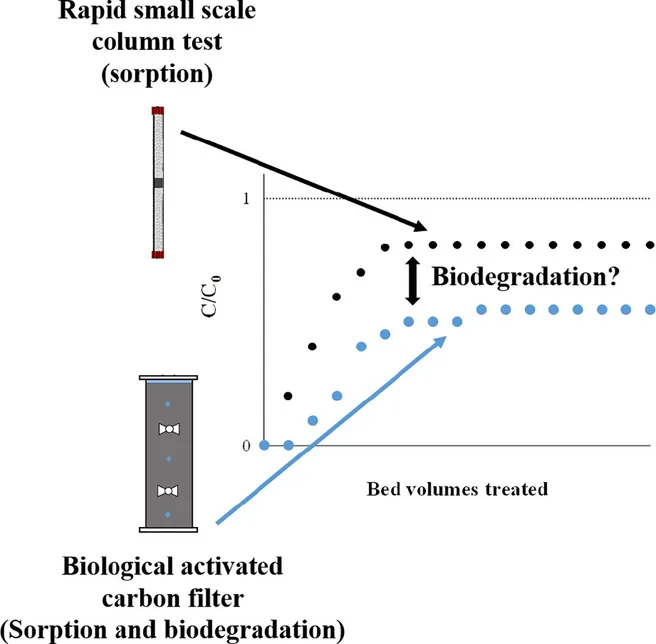Efficient adsorption of certain trace organic chemicals (TOrCs) present in secondary treated municipal wastewater treatment plant (WWTP) effluents onto granular activated carbon (GAC) has already been demonstrated at lab- and full-scale. Due to high organic matter concentrations in WWTP effluents, GAC filters eventually develop a biofilm and turn into biological activated carbon filters (BAC), where removal of organic compounds is governed by biodegradation as well as by adsorption. However, determining TOrC breakthrough by conducting a long-term BAC column experiment to discern between the removal mechanisms is not possible due to competition for adsorption sites, fluctuating water quality, and other variables. Therefore, a rapid small scale column test (RSSCT) was conducted to determine the contribution of adsorption for select chemicals at 10,000 bed volumes treated (BVT). These results were then used in the pore surface diffusion model (PSDM) to model adsorption behavior at 40,000 BVTs. Pseudo-Freundlich K values obtained from the PSDM model were compared with K values obtained from an integral mass balance calculation. This comparison revealed that the modeling was most accurate for moderately to poorly adsorptive compounds. In comparing RSSCT results to long-term BAC columns, the modeling approach best predicted BAC removal of well adsorbing compounds, such as atenolol, trimethoprim, metoprolol, citalopram, and benzotriazole. However, differences in predicted vs observed BAC removal for the removals of venlafaxine, tramadol and carbamazepine revealed that BAC adsorption capacity was not yet exhausted for these compounds. Therefore, a comparison was not possible. The approach would be improved by operation at longer EBCT and improved calculation of compound fouling indices.
Zhiteneva et al. 2020
Neuer Zeitschriftenbeitrag von Zhiteneva et al. 2020
